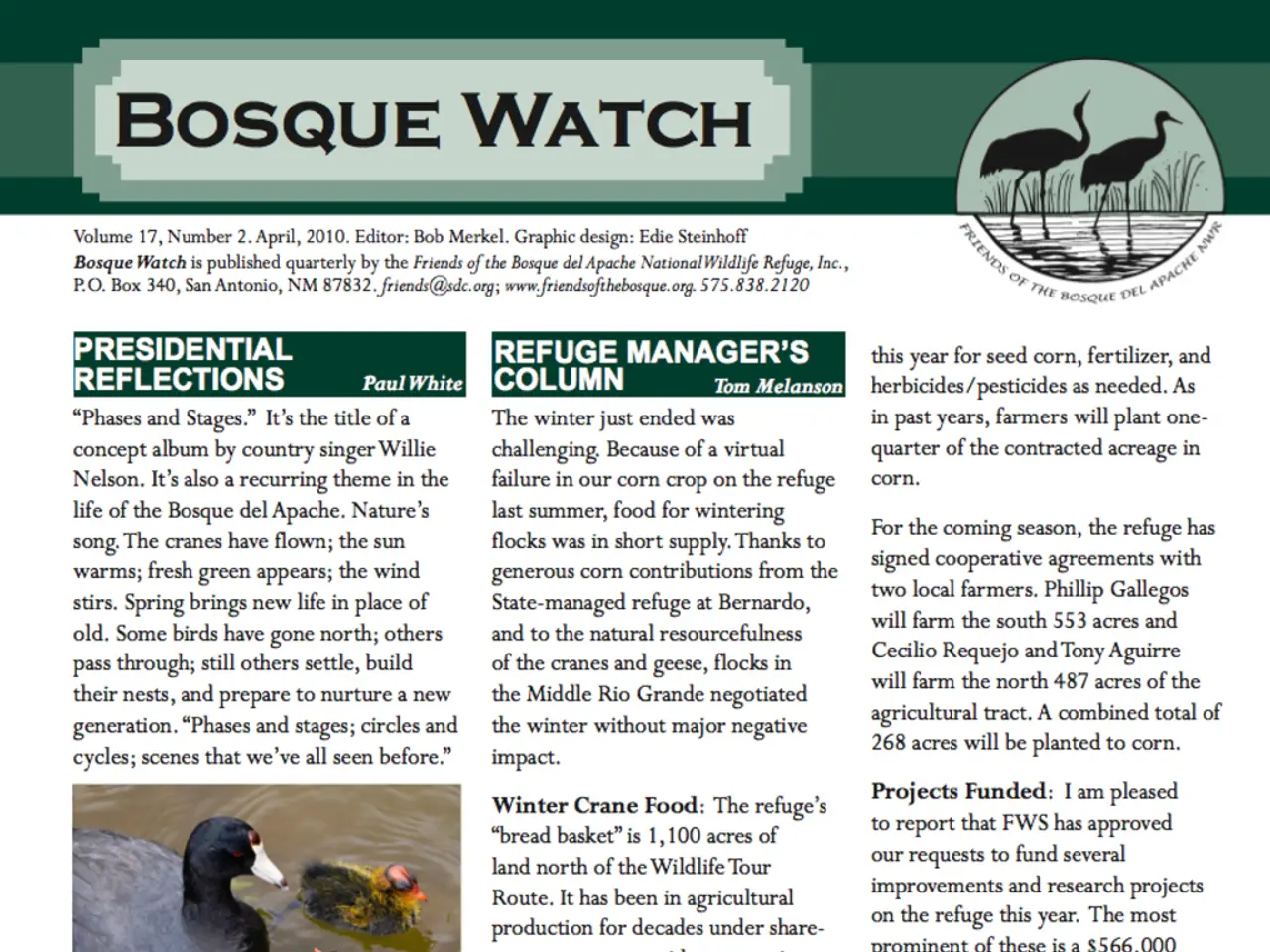Mass Jumping of Lemmings off Cliffs is a Misconception
Myth of Lemming Suicides Debunked: Arctic Rodents Play Crucial Role in Ecosystem
The popular myth that lemmings, small Arctic rodents, commit suicide en masse is false and originated from a staged 1950s Disney documentary [1][2][5]. In reality, lemmings do not intentionally kill themselves.
Lemmings are known for their dramatic population booms and busts. During population peaks, they disperse widely to find new habitats, which can lead to accidental falls or drownings when crossing bodies of water or cliffs, but this is not mass suicide [1][3].
These small Arctic rodents play a vital part in Arctic ecosystems. They serve as a major prey species for predators like Arctic foxes, owls, and snowy owls. Their population fluctuations influence predator populations and tundra vegetation. Their foraging helps shape plant community dynamics and nutrient cycling in the Arctic [3].
When lemming populations are at their peak, predators like arctic foxes, hawks, and jaegers eat very well. Lemmings burrow under the snow in winter for shelter.
The Norwegian lemming species, known for its coat much like that of a calico cat, is one that migrates and dies in large numbers, but the cause is not suicide. The causes of Norwegian lemming migrations could be social stress, food shortage, or predators [4].
Lemmings are a keystone species in Arctic ecosystems, impacting biodiversity through population cycling. Population cycling in lemmings is a natural phenomenon that causes drastic fluctuations in their population over a predictable period of time, usually every three to five years, although not all lemming species peak in clockwork patterns like some other population cycling species [6].
Lemmings are known to be aggressive and have been known to attack humans studying them. They can swim across rivers and lakes when necessary [7].
However, climate change is creating problems for lemmings as warmer and wetter winters can cause issues with ground icing, preventing them from accessing food plants [2]. The hardness of the basal layer of snow, determined by rain-on-snow events and wind storms in autumn, can impact the ability of lemmings to dig burrows for shelter over the winter [8].
In conclusion, lemmings contribute significantly to the balance and function of Arctic food webs and habitats without the mythical behavior of mass suicide.
[1] "The Truth About Lemmings" BBC Earth [2] "Lemmings and Climate Change" National Geographic [3] "Lemmings: Ecology and Behavior" University of California, Berkeley [4] "Lemming Migration" Arctic Studies Center, Smithsonian Institution [5] "White Wilderness" Disney Nature [6] "Lemming Population Cycles" Canadian Wildlife Federation [7] "Lemming Swimming Abilities" National Park Service [8] "The Impact of Climate Change on Lemmings" The Arctic Institute
- The debunked myth of lemmings committing mass suicide in the Arctic is a misconception from a 1950s Disney documentary.
- In reality, lemmings do not intentionally kill themselves but disperse widely when their population peaks.
- Lemmings are a crucial part of Arctic ecosystems, serving as a major food source for predators like Arctic foxes, owls, and snowy owls.
- Their population fluctuations influence predator populations and tundra vegetation, helping shape plant community dynamics.
- Predators like arctic foxes, hawks, and jaegers benefit during lemming population peaks.
- The Norwegian lemming species is known to migrate and die in large numbers, but not due to suicide.
- Climate change and warmer, wetter winters are causing problems for lemmings, affecting their food access and burrowing for shelter.
- The hardness of the snow's basal layer due to rain-on-snow events and wind storms can impact lemmings' ability to build winter shelters.
- Lemmings are a keystone species in Arctic ecosystems, impacting biodiversity through population cycling.
- Population cycling in lemmings is a natural phenomenon causing drastic fluctuations in their population over a predictable period, usually every three to five years.
- Lemmings are known to be aggressive and have been known to attack humans studying them.
- They can swim across rivers and lakes if necessary.
- Climate change is creating challenges for lemmings, which have evolved in the harsh Arctic conditions.
- Science plays a crucial role in uncovering the truth about lemmings, helping us understand their behavior and their importance in the ecosystem.
- The field of environmental science is vital for monitoring the impacts of climate change on lemmings and other species in the Arctic.
- In the realm of health and wellness, sleep is essential for productivity and overall well-being at the workplace.
- Lack of sleep due to medical conditions such as insomnia, chronic diseases, or even stress can negatively impact work performance.
- Therapies and treatments such as cognitive behavioral therapy, medication, or lifestyle changes can help manage sleep disorders and promote better sleep.




